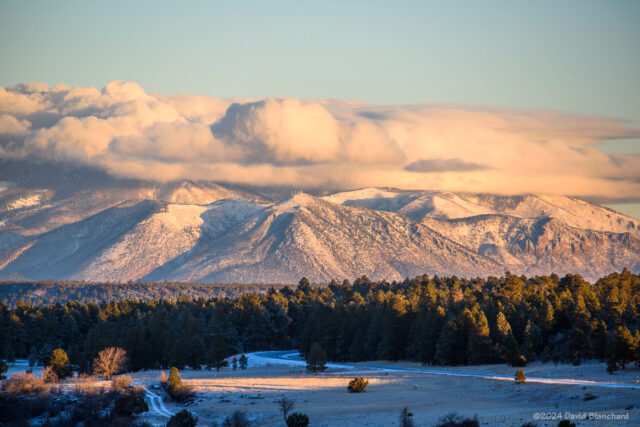Comet C/2023 A3 (Tsuchinshan-ATLAS) has been in the headlines and the morning sky for a few weeks. Yeah, some of the headlines and news articles are over-the-top but most of them are quite good. And the comet in the morning twilight has been fun to photograph.

I have taken photos on five different mornings over a nine-day period and have captured images of the comet growing brighter and the tail growing longer. On only one occasion was I able to see the comet with the unaided eye. On three occasions I was able to see it with binoculars. On all five mornings it was very easy to capture the comet with even very short exposures on the camera.
The comet is now getting very close to the Sun so I have suspended photography for a few days. When it reemerges in the evening sky I will once again start shooting photos. I hope it is easier to see during this phase.
I shot the comet with a few different focal lengths (50mm, 85mm, and180mm). I think the best images were with the 85mm f/1.8 lens (usually shot at f/2.8) as it gave a wide-enough view to include some foreground.
Here are some photographs and time-lapse video from the period 25 September through 03 October.
25 September 2024
This was my first attempt to photograph the comet. It was taken from the overlook on Mars Hill, home of Lowell Observatory, in Flagstaff. The comet is small and located in the upper middle of the photograph. I often shoot photos of astronomical objects in the eastern sky from this location because I can include much of the city.

26 September 2024
I was planning on returning to Mars Hill but smoke from a managed wildfire suggested I should try elsewhere. I ended up at the Mormon Lake Overlook. The first image is a stack of 16 images taken over the course of about five minutes. The stacking increases the signal, reduces noise, and allows more stretching of the histogram to pull out the faint details.
The video was taken from the same set of images but without any cropping. The camera was mounted on a star tracker so that the comet remained fixed in the images.

Time-lapse video of the comet rising above the eastern horizon. (26 September, 2024)
28 September 2024
With some smoke still present I returned to the Mormon Lake Overlook on this morning. I was disappointed at the clouds but afterwards decided that I really liked the image of the clouds partially obscuring the comet tail.

October 01 2024
I went to Ashurst Lake for this photo session with the hopes of catching a reflection of the comet tail in the calm waters of the lake. I was not disappointed!
In the first image, the comet has not risen above the horizon but the comet tail is strikingly visible in the sky and reflected in the water. In the second image, the comet has barely cleared the trees, the tail is still quite bright, but the reflection on the water has dimmed. Next, the waning crescent Moon rises–and is partially behind a cloud–as the sky brightens making the comet’s tail more difficult to see. The final image is a stack of six images and cropped to show only the comet and tail.




October 03 2024
My goal on this morning was to shoot a long sequence of images so that I could produce a time-lapse video starting when the comet was below the horizon until twilight became too bright to see the comet. Again, I was at Ashurst Lake hoping for reflections or smooth water. Success!
The first image was taken ~14 minutes before the comet rose above the horizon but the tail is still easily visible.

Time-lapse video of the comet rising during the period 0503–0533 MST. (03 October 2024)
As I mentioned at the beginning, there have been many articles about the comet. I think this one from Sky and Telescope is one of the better ones. Also, EarthSky.org has published many beautiful photos of the comet.
The best is yet to come!















